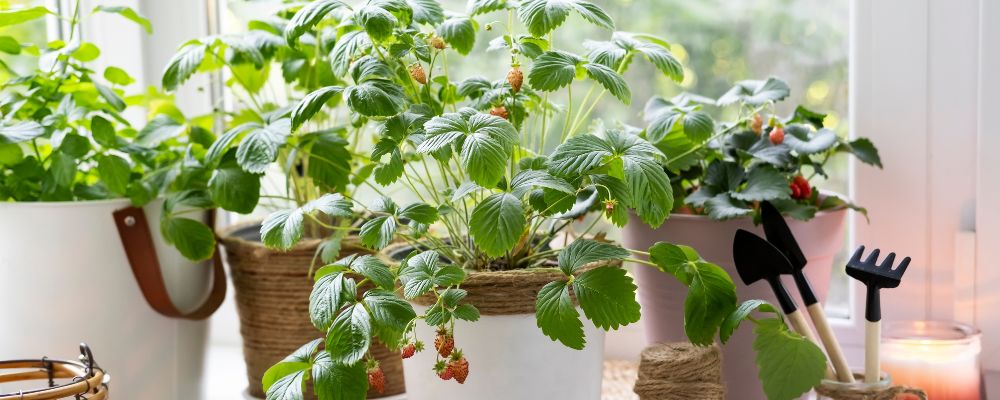Gardening in Small Spaces

If you are new to gardening and live in an apartment or have a small backyard, it is still possible to grow a wonderful variety of flowers, herbs, and vegetables. With clever planning, you can utilise your space to become productive and beautiful. Follow along for some nifty tips to get you started.
Container Gardens
Many plants grow quite easily in pots; this is useful for small backyards or patios. Why not try out loose-leaf lettuce, rocket, spinach, chilli, herbs, container tomatoes, zucchini, and cucumber? As a rule of thumb, try to find pots and tubs that are at least 30cm deep to allow enough space for healthy root systems.
Keep an eye out for pots designed to sit on windowsills or vertical stacking wall pots, some even have water reservoirs for ease of care. Hanging pots are a beautiful addition, especially for growing flowers like pansies and petunias.
For larger pots and tubs, it is helpful to attach wheels to the base or keep them on pot trolleys. This will put less pressure on your back and allow you to move plants around as the angle of the sun changes throughout the year.
Indoor Gardening
Why not utilise indoor areas for gardening? Hydroponic systems are widely available these days and suited for beginners as they supply all the light, nutrients, and space that your plants require. They are great for apartments!
Another option for either indoors or balconies are ornamental houseplants. Many of these can tolerate low light conditions, which is often a common concern in small spaces. Some popular varieties to try include snake plant, bird's nest fern, philodendron, and peperomia.
Grow Tall Plants
When you lack ground space, try out climbing varieties instead. Sweet peas, climbing beans, and snow peas are some great plants when height is not a restriction. All you need are some sturdy stakes and wire mesh for the plants to climb. A garden arch to train climbers onto is also a wonderful addition and has a very small footprint.
Maximise crop planning
In small gardens, bed space is prime real estate. By intercropping long-season crops with short-season crops, you get double the productivity in the same size space. Try out some popular combinations such as sowing rows of radish in between your cabbages and kale or planting a quick crop of loose-leaf lettuce under your trellised tomatoes. As a bonus, this keeps the weeds down by protecting the open soil and diversifies your garden.
Experiment with your plant spacing and see what works best for your garden. Crops like Asian greens, beetroot, and radish can work in groups of 2-3 seedlings per space. Harvest the biggest vegetable first, allowing the remaining seedlings in the clump to grow out. This effectively gives you a longer period of harvest, all while conserving space.
Design your space
By planning your garden out, you can fit many more plants in the same area. Offset your planting holes when growing in rows, this creates a triangular pattern and utilises more space than standard parallel planting.
Measure out walkways so they are just wide enough for you to push a wheelbarrow down and kneel comfortably to weed. You may find that you actually have room for some extra pots or garden beds along the edge.
What seeds should you use for container gardening?
Certain varieties are more suitable for growing in containers. Herbs, mini tomatoes, leafy salad mixes, and strawberries are examples of edible plants that thrive in pots. If you’re growing from seed, keep a look out for seed packets that are labeled as ‘Container’ or ‘Dwarf’ varieties.
Mr Fothergill’s Container Garden seed range makes this job easy, as these varieties are specially selected for growing in pots and containers.
As you can see, space restrictions shouldn't be a reason why you can't have your own garden. With the right information and the right tools, you can be harvesting your own veggies in no time!


